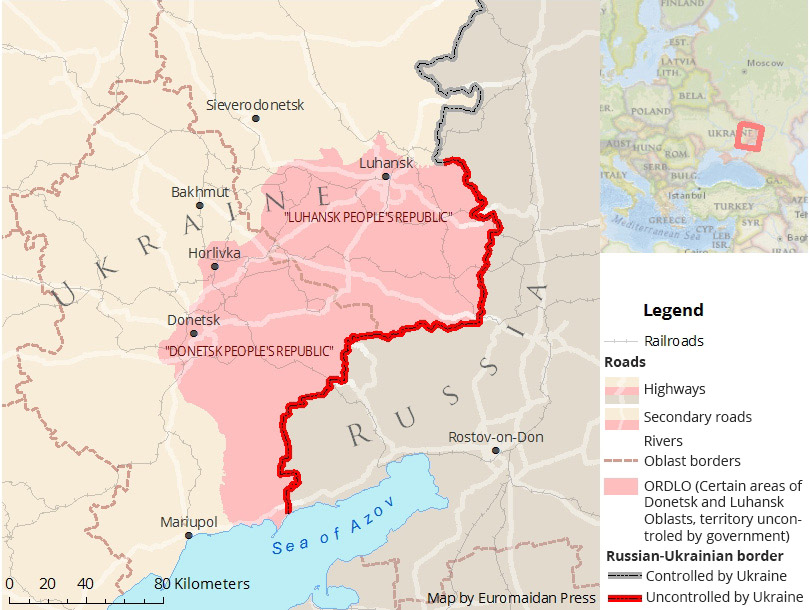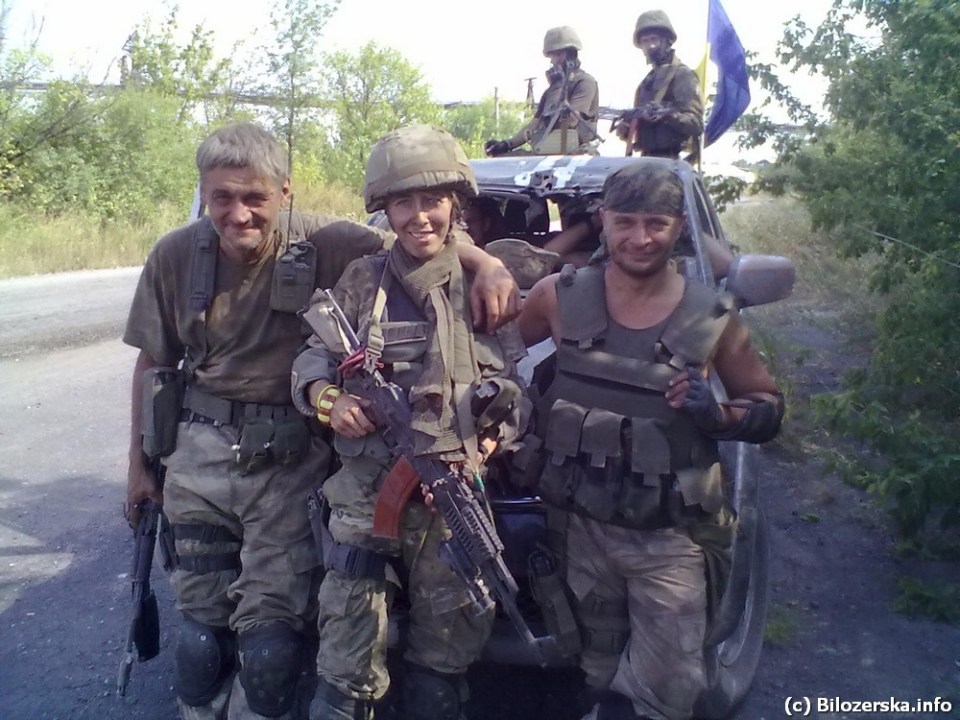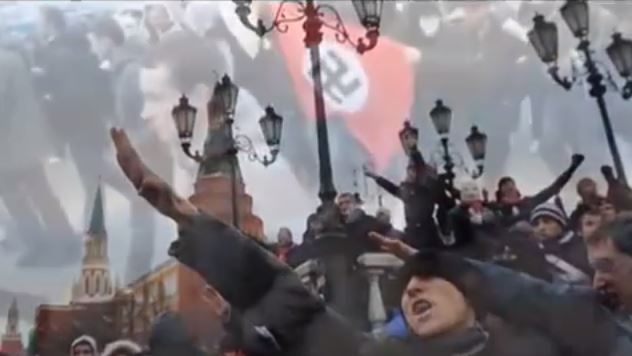The last week in Ukraine was marked by a sudden announcement by the chief of the unrecognized "Donetsk People's Republic" ("DNR") Aleksandr Zakharchenko on the creation of a new fictional state “Malorossiya,” which he described as a successor state to Ukraine, on 18 July.

There is no need to go into the details of this empty rhetoric. It was followed by a barrage of condemning statements by officials from Ukraine, the OSCE, EU, and the USA. The local blogosphere was abuzz with ridiculous pictures, memes regarding the so-called founding of Malorossiya.
Zakharchenko’s insane proclamations may be laughable, but it's worth remembering that the Kremlin pulling the shots in Donbas. Behind Zakharchenko's crazy ideas is always something much bigger and sinister. At least, it is manifest in the escalations at the frontline that followed his similar statements in the past. Zakharchenko's promise to take Sloviansk, Mariupol, Kramatorsk in mid-February 2015 was followed by Russian-militant forces shelling those towns with Grad and Smerch rockets, causing losses among the civilian population. When "head of DNR" boasted that the militant forces of his "republic" had enough strength and resources to take over all of Donetsk Oblast, we witnessed the bloody fighting at Avdiivka in the end of January in 2017.
Krasnohorivka: the next hot spot
This time was no different. The small town of Krasnohorivka, a tiny part of the Donetsk agglomeration, became the next hot spot on the Donbas war map. The Ukrainian Army liberated it from the Russian-backed militants in the beginning of August 2014. Since then, it is a constant target for their heavy artillery and sabotage and reconnaissance groups (SRG).
Just two days after Zakharchenko's announcement, on 20 July, Ukraine suffered 4 soldiers KIA, 1 captured, 7 WIA, despite the "Harvest ceasefire" announced on 24 June. Of them, three soldiers from the 92nd mechanized infantry brigade were killed in a flare-up near Krasnohorivka. The enemy follows a well-known tactic: using the 120 mm mortars and a pair of tanks, weapons prohibited by the Minsk II Agreements, they gave an opportunity for an SRG consisting of 10-15 men to come close to the positions of Ukrainian infantry near Krasnohorivka. The concentrated shelling and the prohibition given to Ukraine’s Armed Forces to use their artillery made repulsing the attack practically impossible. Taking into account the gravity of the situation, the commanding officer made the decision to retreat. Later, when a reinforcement unit came to the rescue, with concerted efforts, the 92nd mechanized infantry brigade regained control over the previously lost positions.
Likely causes for sudden fighting
There are two factors that could explain the escalation near Krasnohorivka. The fighting here needs to be considered in the context of the overall war situation in the Donetsk direction, that is from Kamianka to Slavne. The tactical success of the 72nd brigade at the Avdiivka Industrial Zone and near Yasyniuvata worsened the situation for the militant forces, making their commanders search for other options on reinforcing their positions.

Krasnohorivka is the position from which it is easiest to deliver flanking blows to Ukraine’s Armed Forces stationed at Nevelske and Pisky and try to obtain footholds for a consecutive splitting attack in the direction of Avdiivka and Karlivka. This is the first reason why the militants decided to test the waters at this very town.
The second reason is the Kurakhiv power plant, situated just 25 km to the west. This is an important infrastructure object, providing energy not only to the city of Donetsk but, which is more crucial for the Ukrainian government, to some districts of the Dnipropetrovsk and Zaporizhzhia oblasts, as well as southern districts of Donetsk oblast, all under Ukraine’s control. The flare-up of fighting in Mariinka, another town between the Kurakhiv power plant and Donetsk, in early June is likely to be connected to the idea of seizing the Kurakhiv power plant, which would allow the self-proclaimed "republic" to either gain more energy independence from Ukraine or to obtain a valuable asset which would allow them to blackmail Kyiv’s authorities to make considerable concessions.
Summing up, it's worth mentioning that the war in Donbas is still ongoing, it has only changed its nature. The small long-suffering town of Krasnohorivka, as morbid as it sounds, is just another hot spot on Donbas war map where Russian-led militants, without regard for the lives of civilians and flouting international agreements to achieve peace, have been creating chaos. Nobody is able to say for sure where the same may happen next. One thing is clear, war is war, it does not choose its victims.
https://www.facebook.com/ato.news/posts/1636418283035638
Read also:
- The forgotten war in Donbas. Ceaseless fighting in eastern Ukraine, explained
- Donetsk separatists call to replace Ukraine with Russian imperial province Malorossiya
- What should Ukraine do about “Malorossiya” ?
- The Kremlin changes its Donbas war narrative
- “Malorossiya”: yet another Russian imperial myth salvaged from the garbage dump of history





